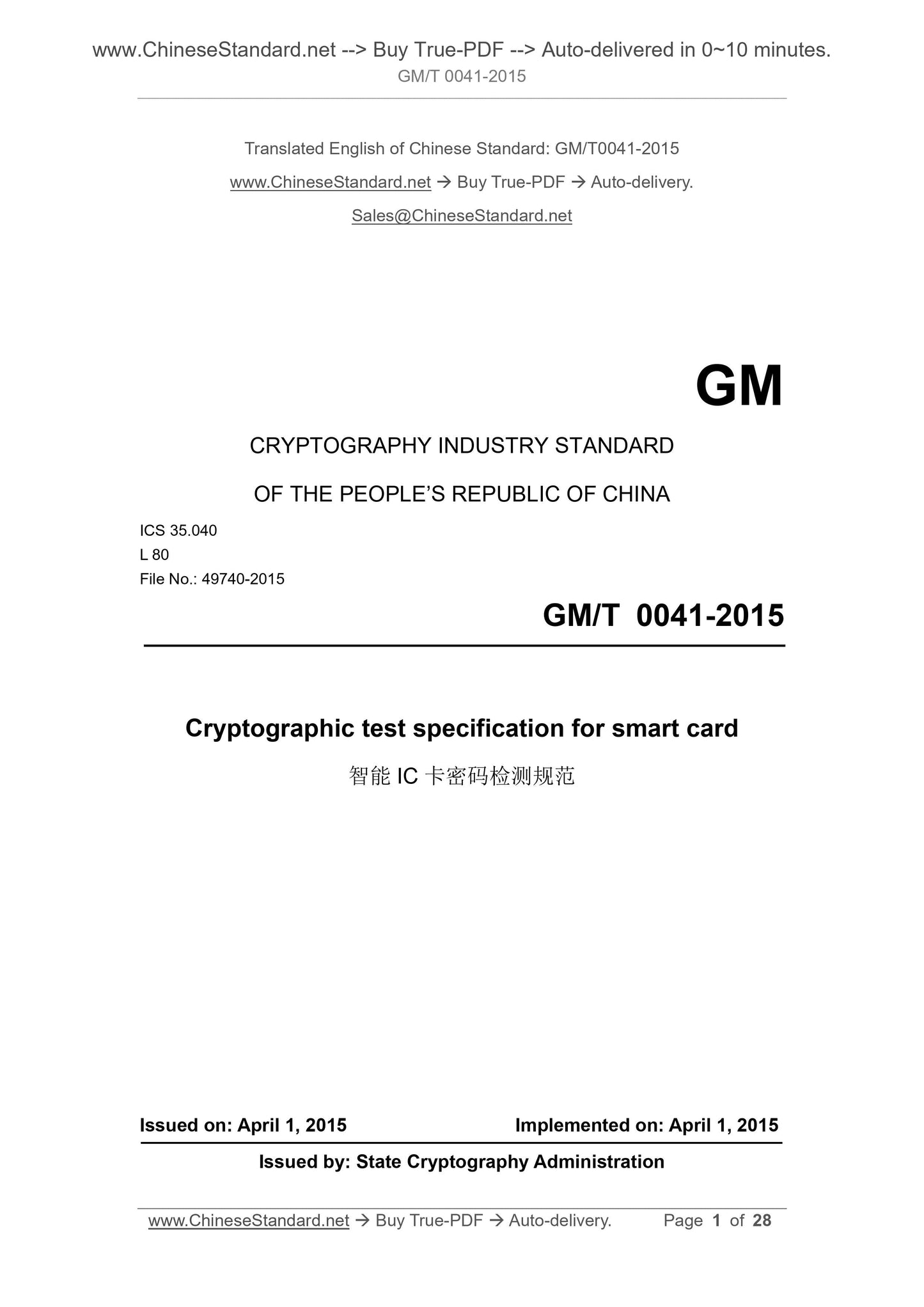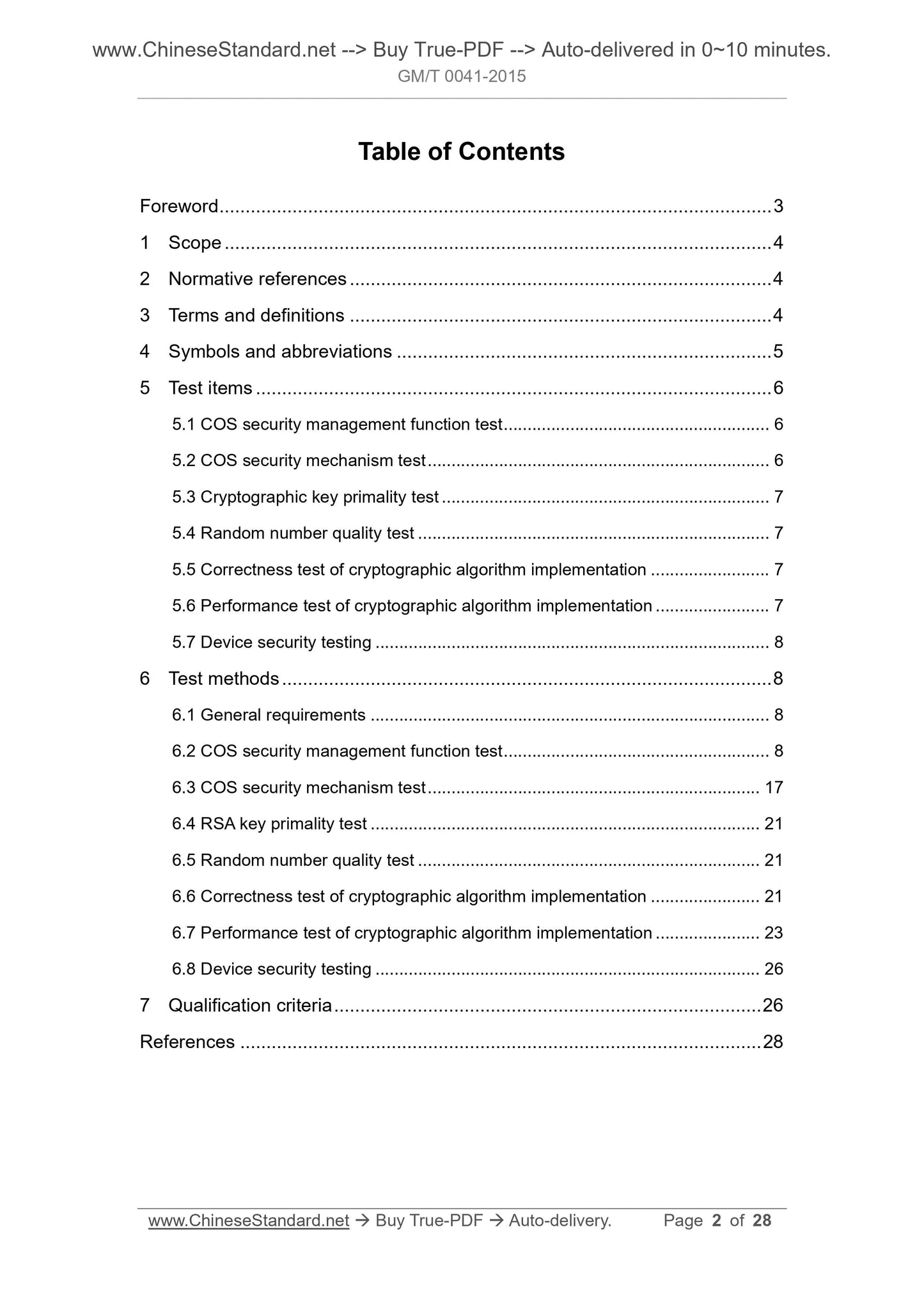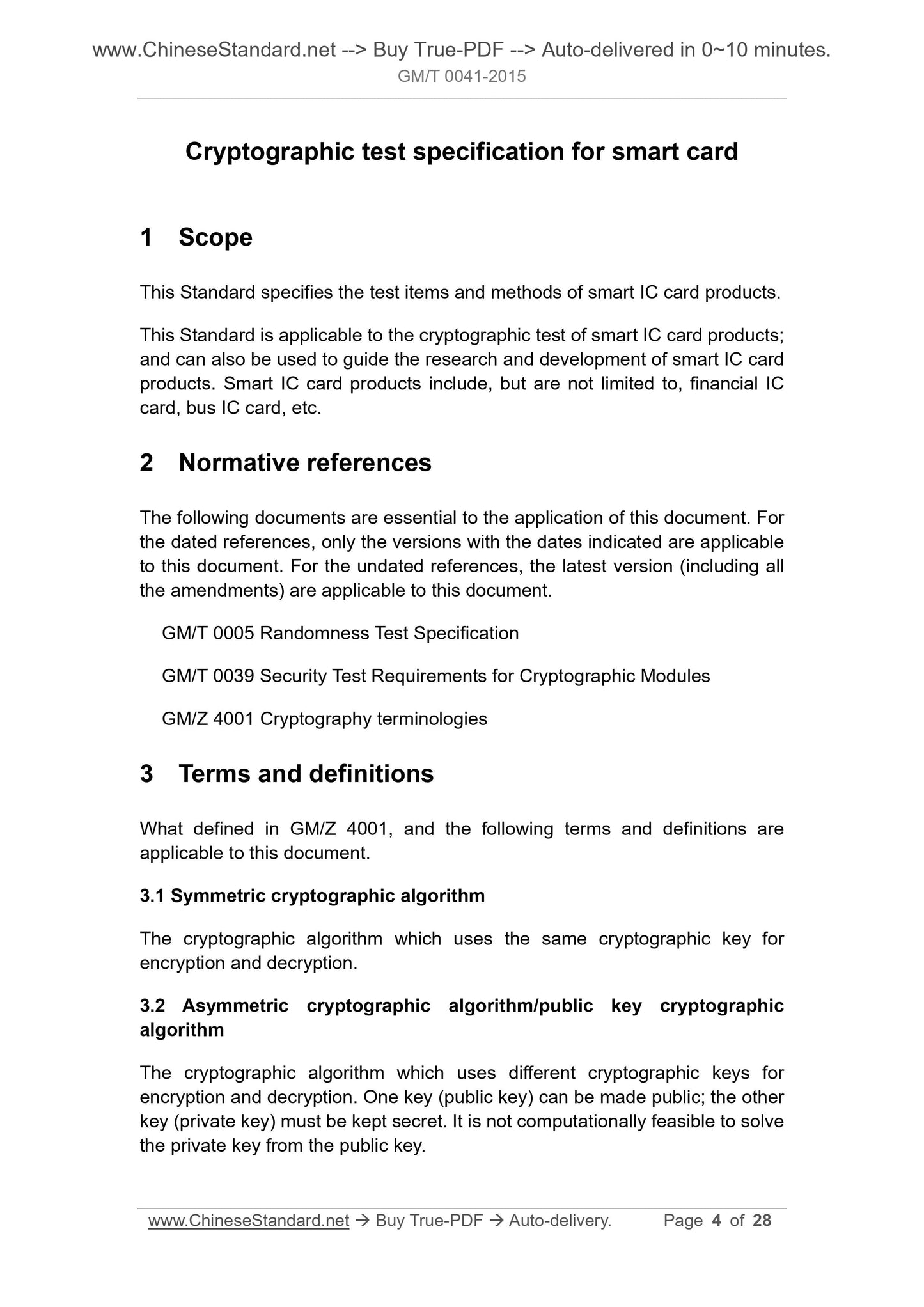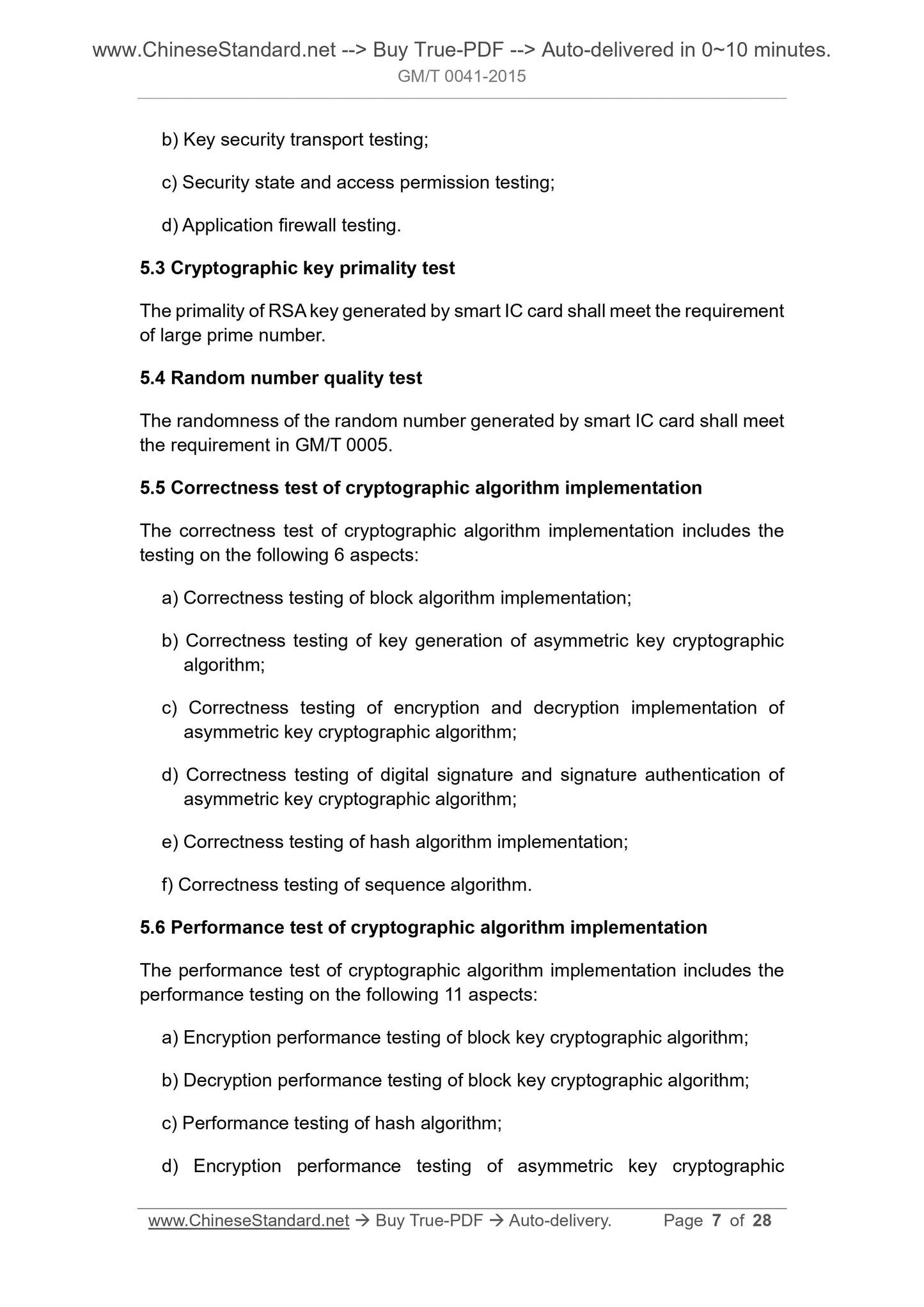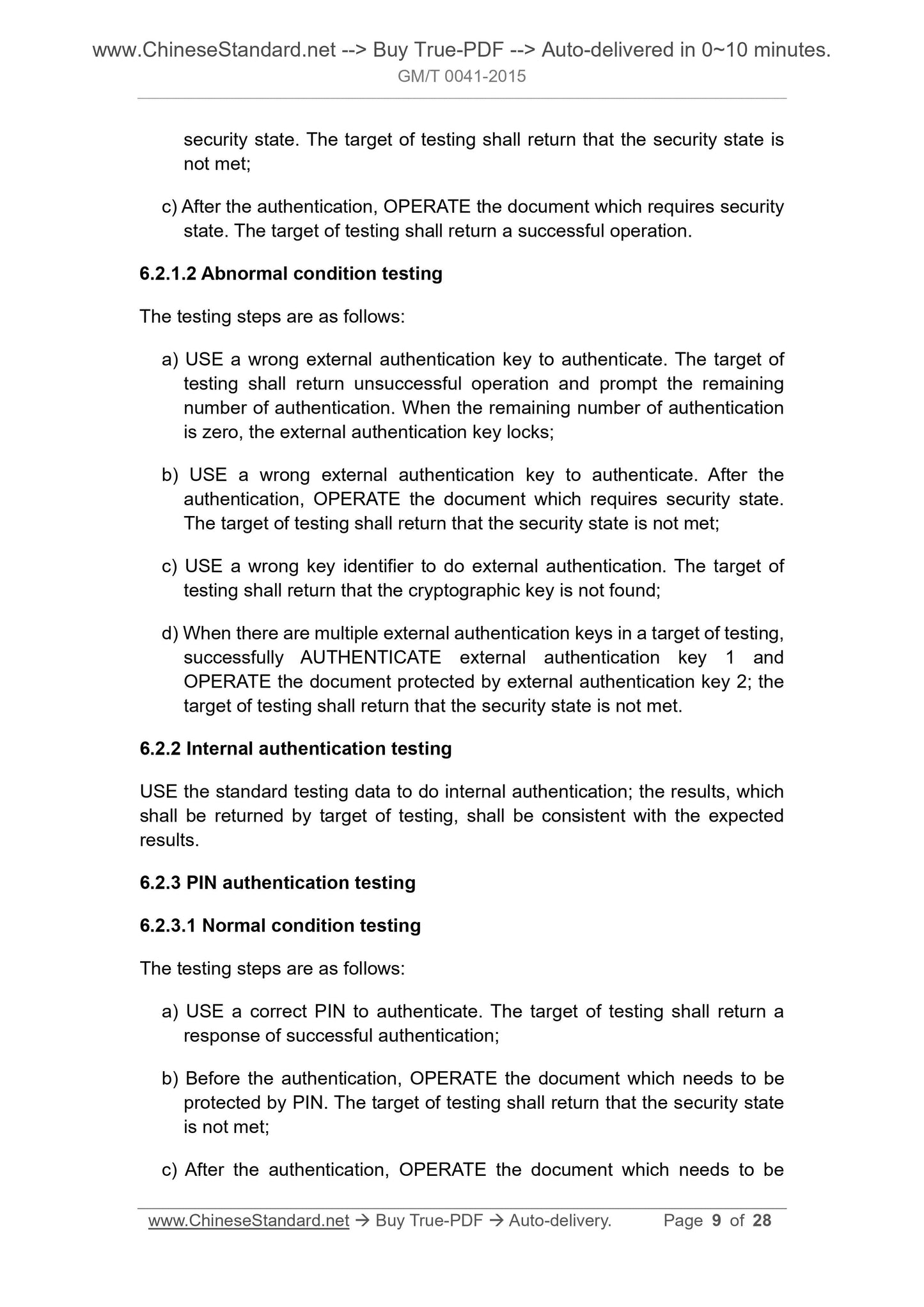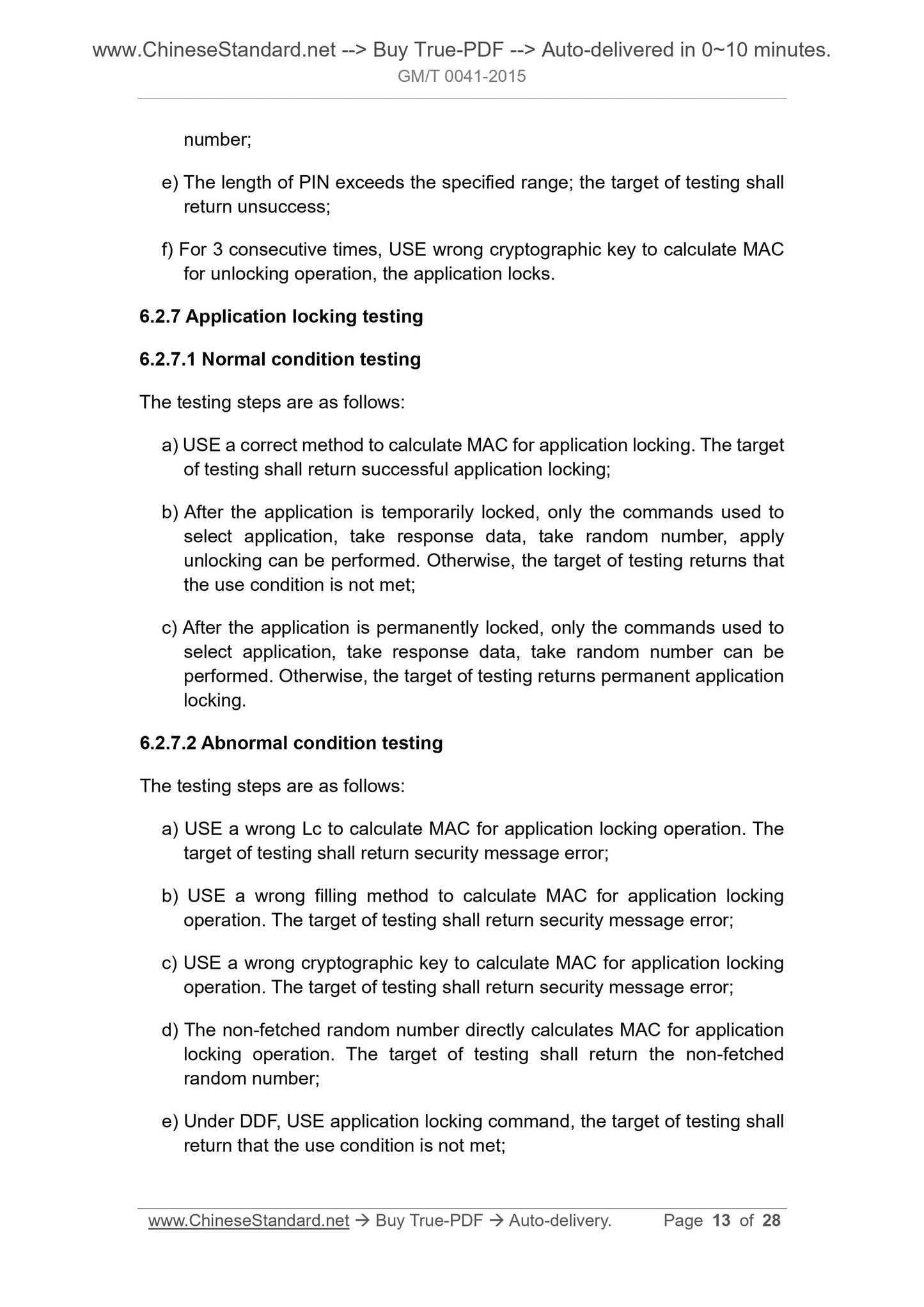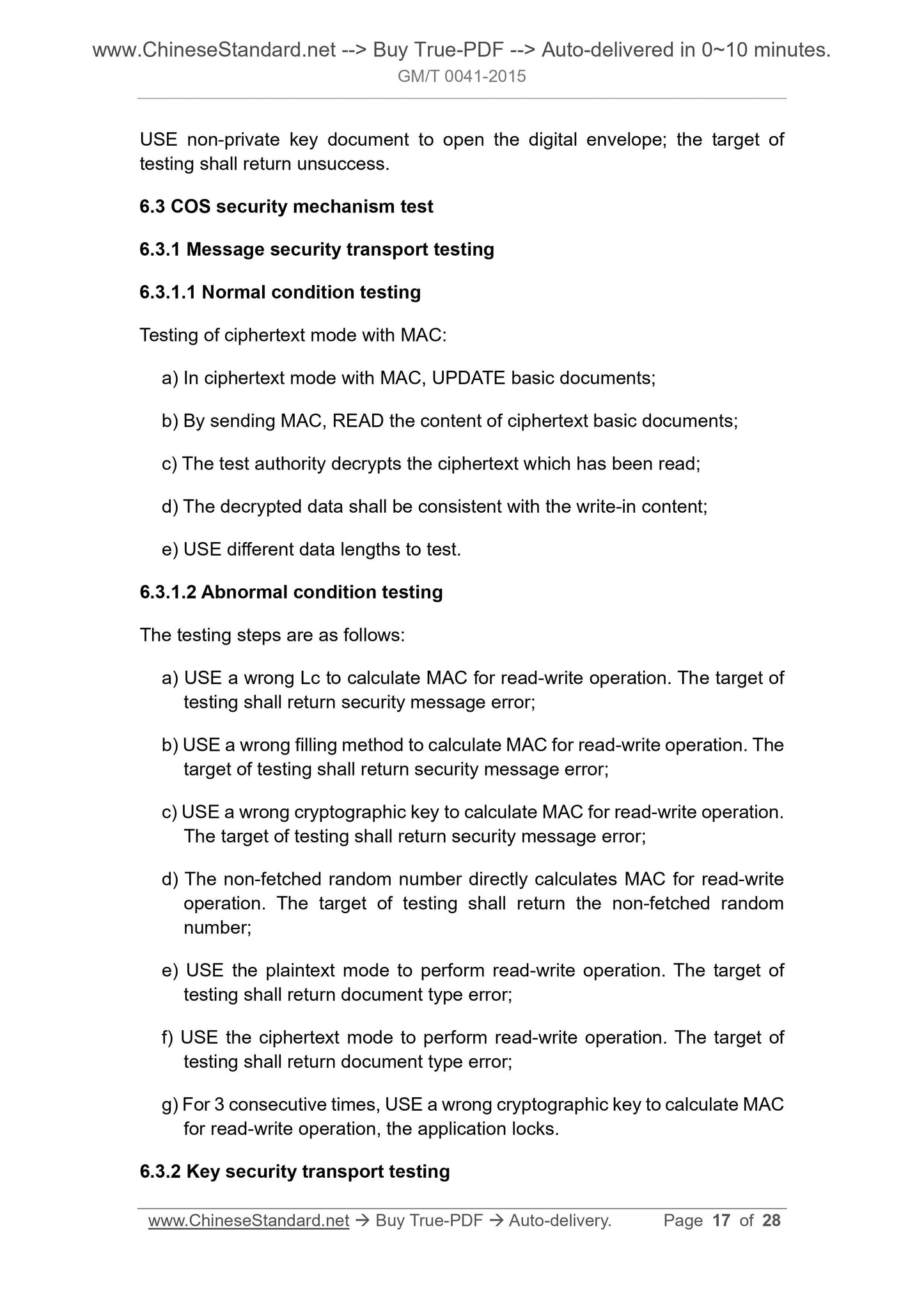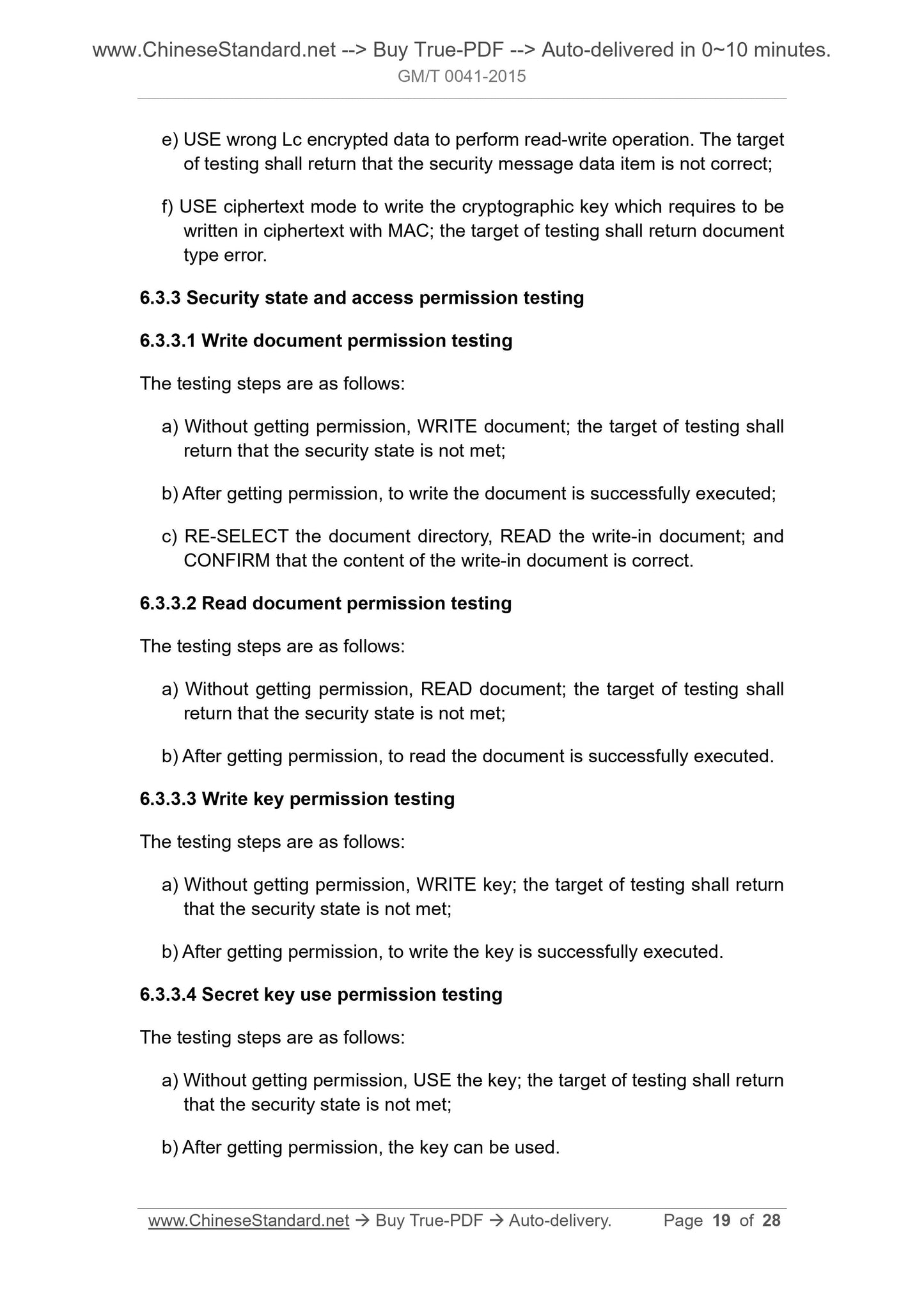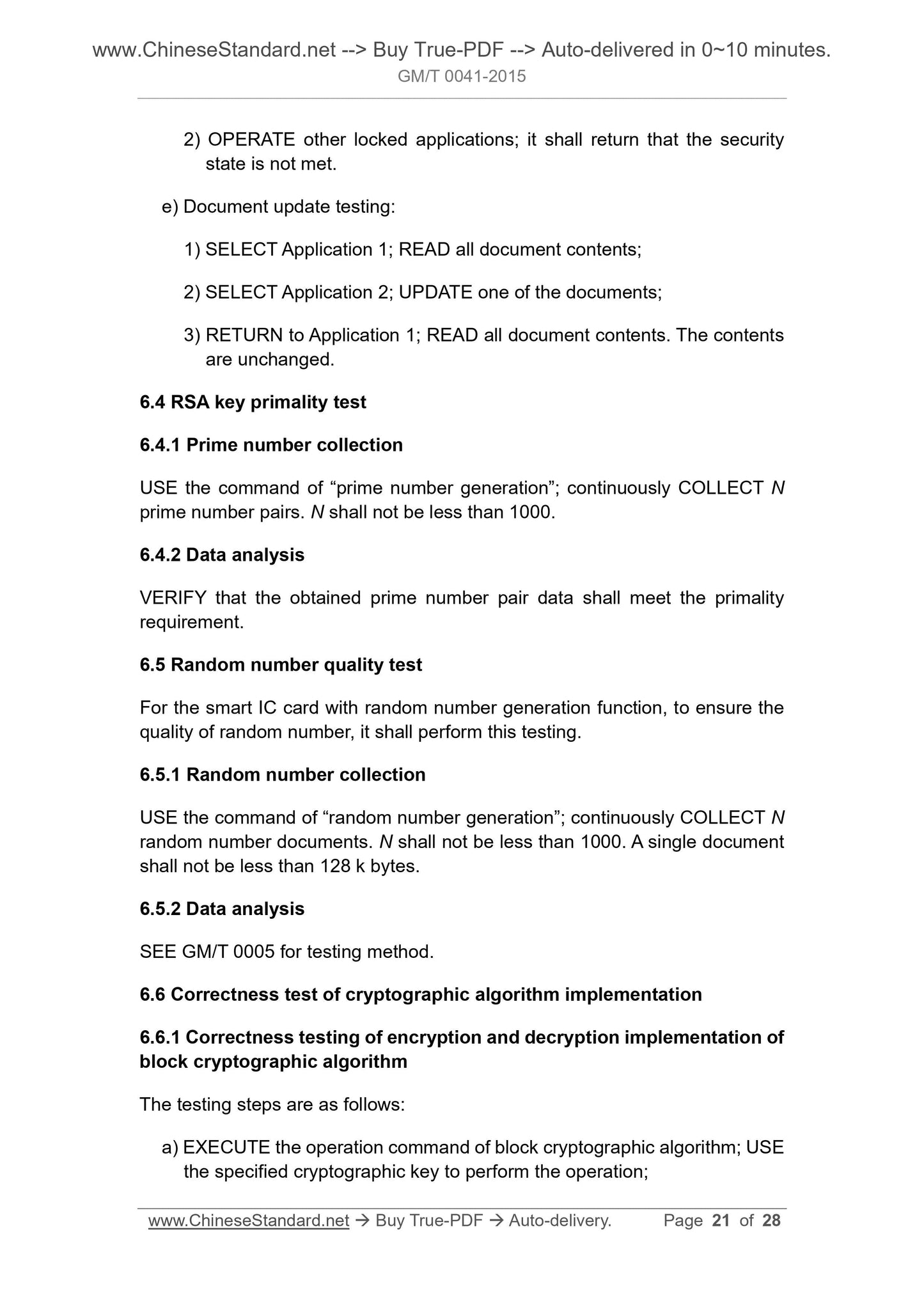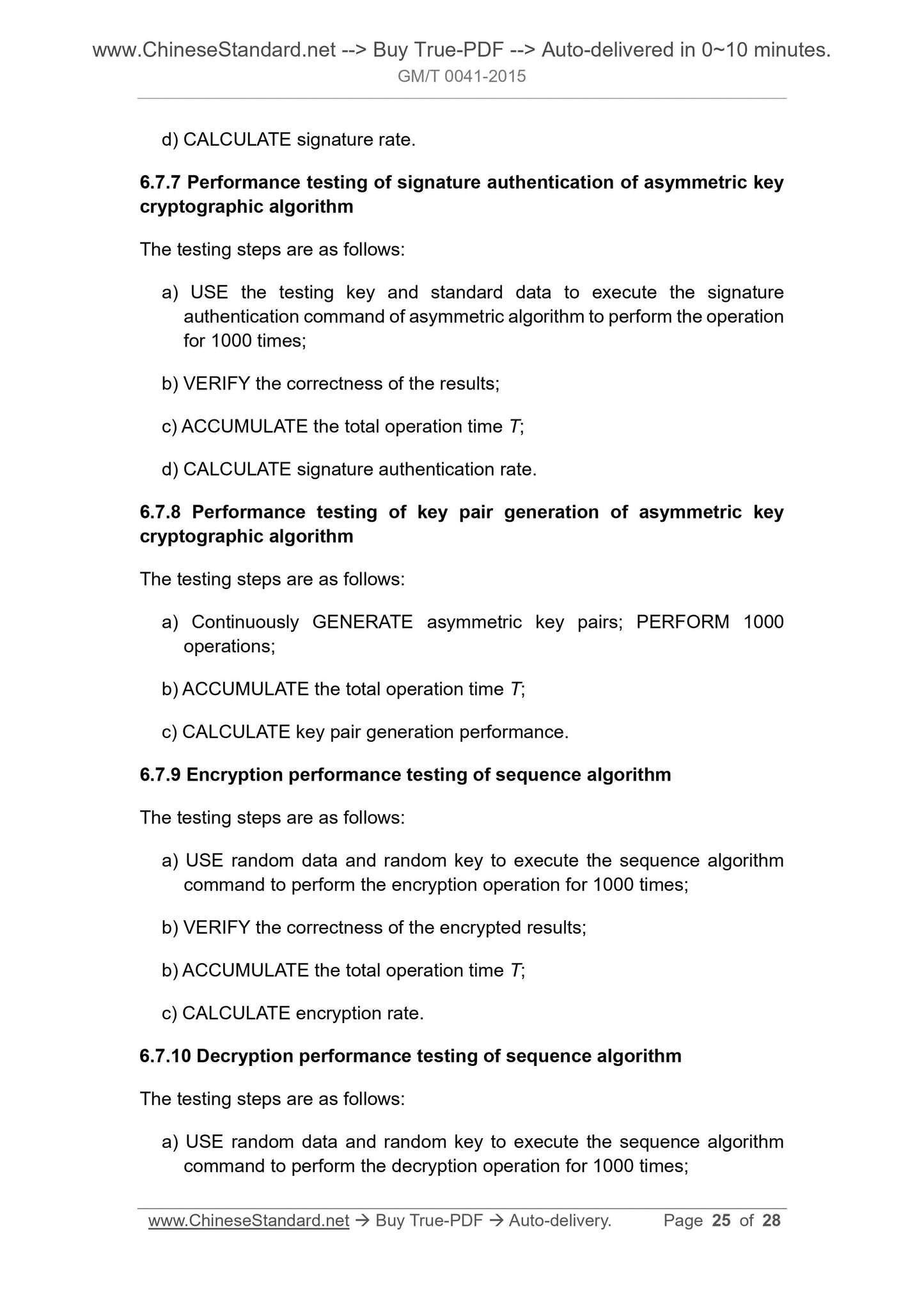1
/
of
10
www.ChineseStandard.us -- Field Test Asia Pte. Ltd.
GM/T 0041-2015 English PDF (GM/T0041-2015)
GM/T 0041-2015 English PDF (GM/T0041-2015)
Regular price
$150.00
Regular price
Sale price
$150.00
Unit price
/
per
Shipping calculated at checkout.
Couldn't load pickup availability
GM/T 0041-2015: Cryptographic test specification for smart card
Delivery: 9 seconds. Download (and Email) true-PDF + Invoice.Get Quotation: Click GM/T 0041-2015 (Self-service in 1-minute)
Newer / historical versions: GM/T 0041-2015
Preview True-PDF
Scope
This Standard specifies the test items and methods of smart IC card products.This Standard is applicable to the cryptographic test of smart IC card products;
and can also be used to guide the research and development of smart IC card
products. Smart IC card products include, but are not limited to, financial IC
card, bus IC card, etc.
Basic Data
| Standard ID | GM/T 0041-2015 (GM/T0041-2015) |
| Description (Translated English) | Cryptographic test specification for smart card |
| Sector / Industry | Chinese Industry Standard (Recommended) |
| Classification of Chinese Standard | L80 |
| Word Count Estimation | 18,164 |
| Issuing agency(ies) | State Administration of Cryptography |
Share
